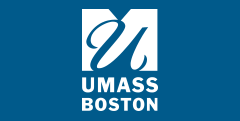Abstract
The United States is experiencing a crisis in the training of scientific and technical personnel. A recent report from the National Science Foundation (NSF) indicates that the number of U.S. citizens earning science and engineering doctorates has decreased nearly 5% since 1980. The National Research Council's study of the adequacy of research support for the mathematical sciences in the United States reveals that not only has the production of Ph.D.s in mathematics declined since 1969-70, but the percentage of U.S. citizens receiving those degrees fell during the last decade from 78% of all mathematics Ph.D.s to only 61% of all mathematics Ph.D.s. Heller reports that there has been a 15% decline between 1977 and 1984 in the number of Americans studying for graduate degrees in mathematics.
Despite these shortages, people of color and white women remain severely underrepresented in scientific and technical professions; this has been the case historically and continues to be true today. In recent years the relative underrepresentation of minority group members and women in the various sectors of American life has received national attention and, to some extent, national action. While a number of initiatives have been undertaken to address this problem, it still remains a serious one, particularly for blacks, Hispanics, and American Indians. Students from these groups continue to underachieve in mathematics, science, and technical subjects. Furthermore, youths from these groups are less likely to take higher level high school mathematics and science courses or to major in mathematics, science, and technical fields in college. The net effect of these circumstances is that members of these groups are underrepresented at the professional levels and their communities are underserved or ill-served by these fields. Perhaps what is most distressing is that these trends suggest that this situation will continue for some time into the future.
Recommended Citation
Johnson, Robert C.
(1991)
"Black Underrepresentation in Science and Technology,"
Trotter Review: Vol. 5:
Iss.
1, Article 5.
Available at:
https://scholarworks.umb.edu/trotter_review/vol5/iss1/5


